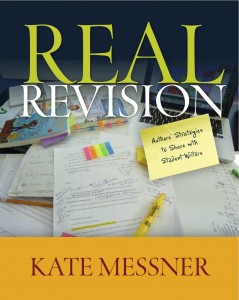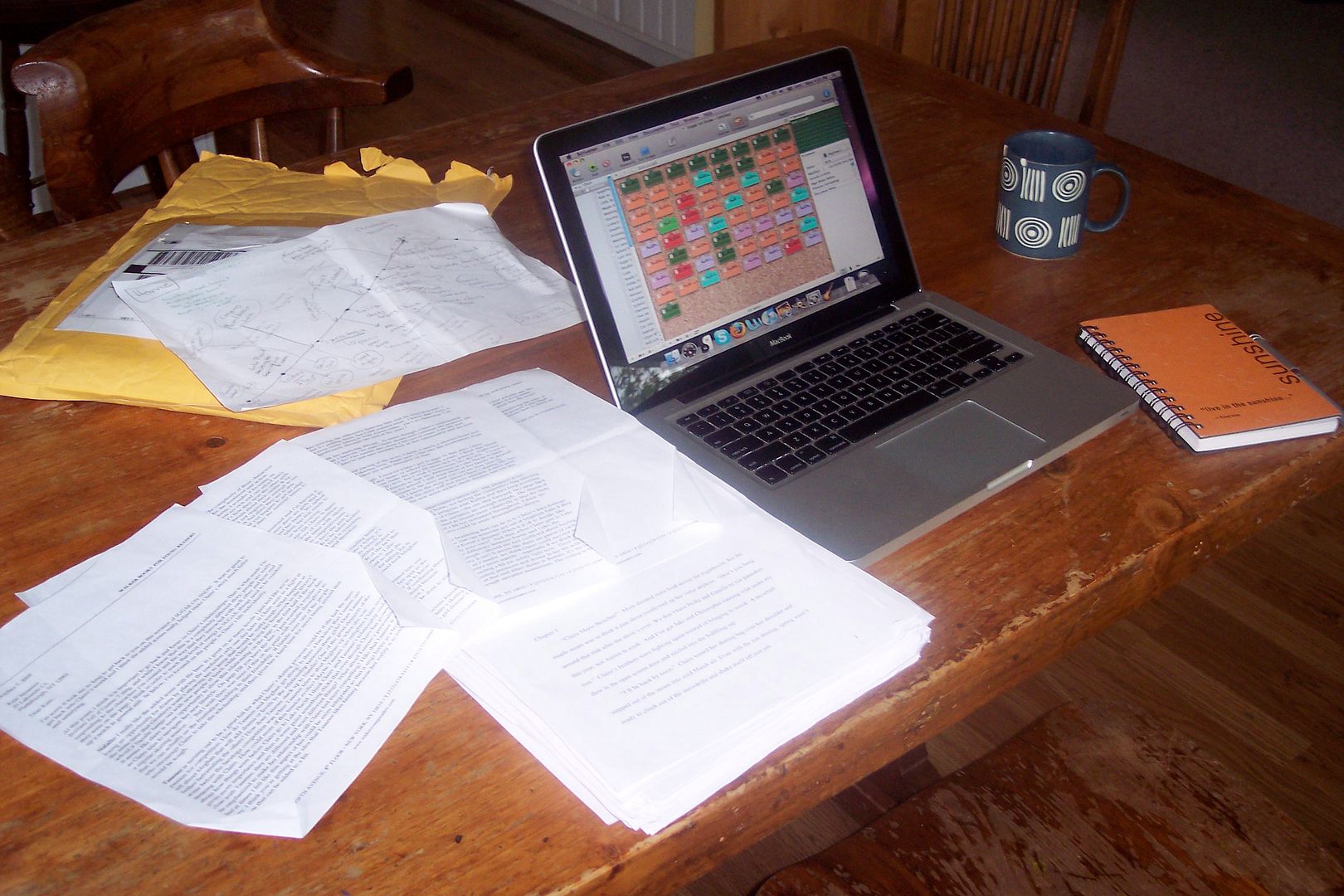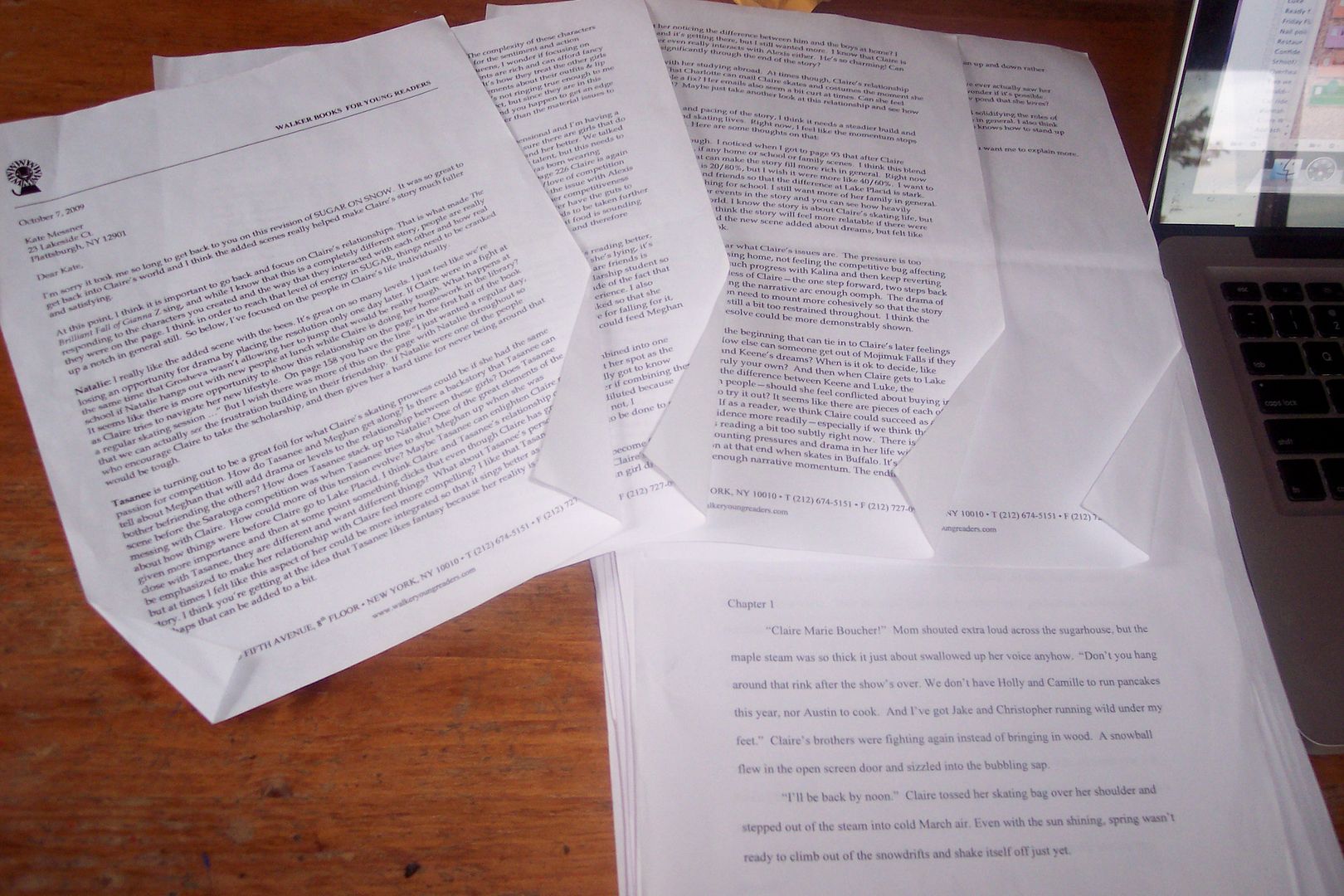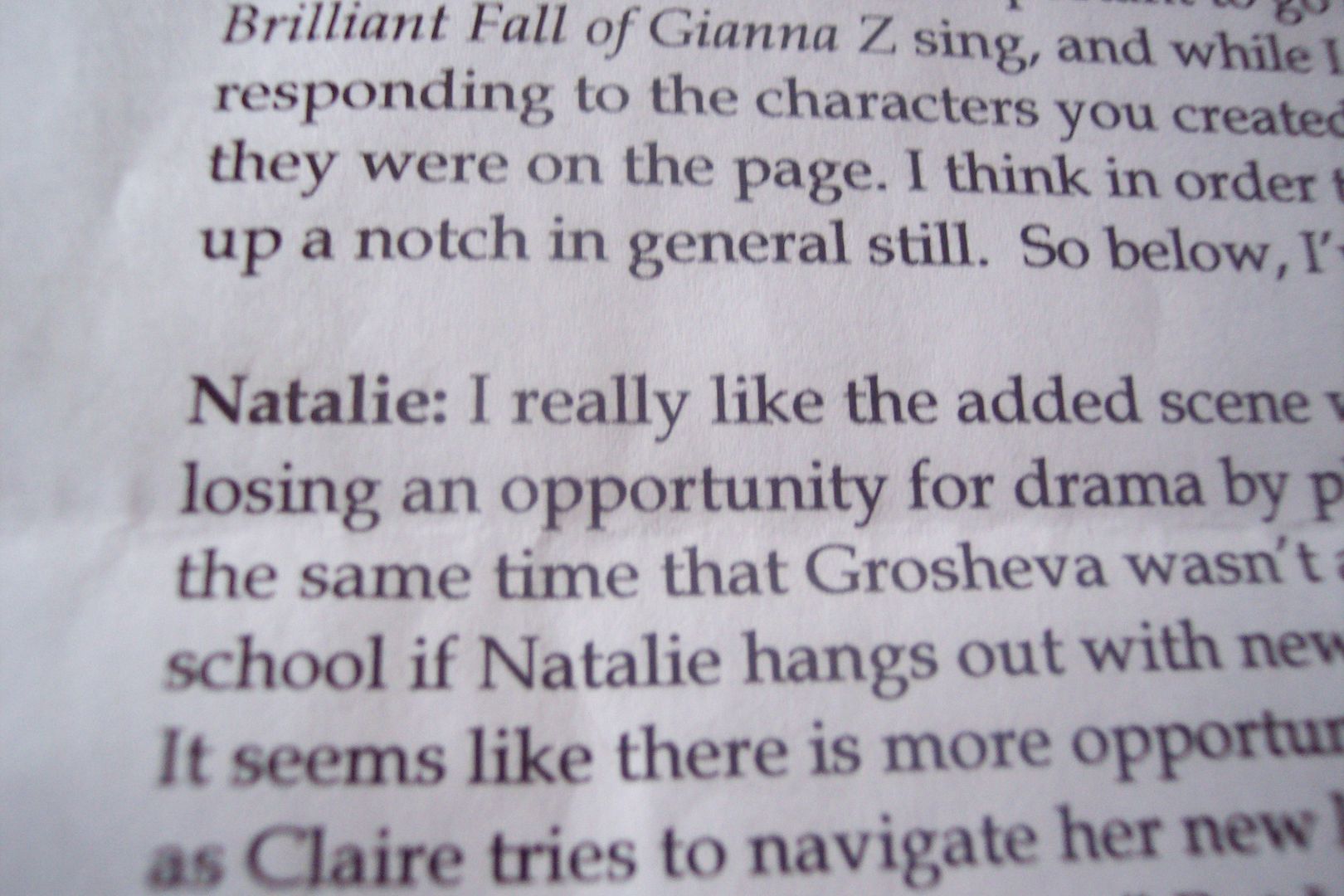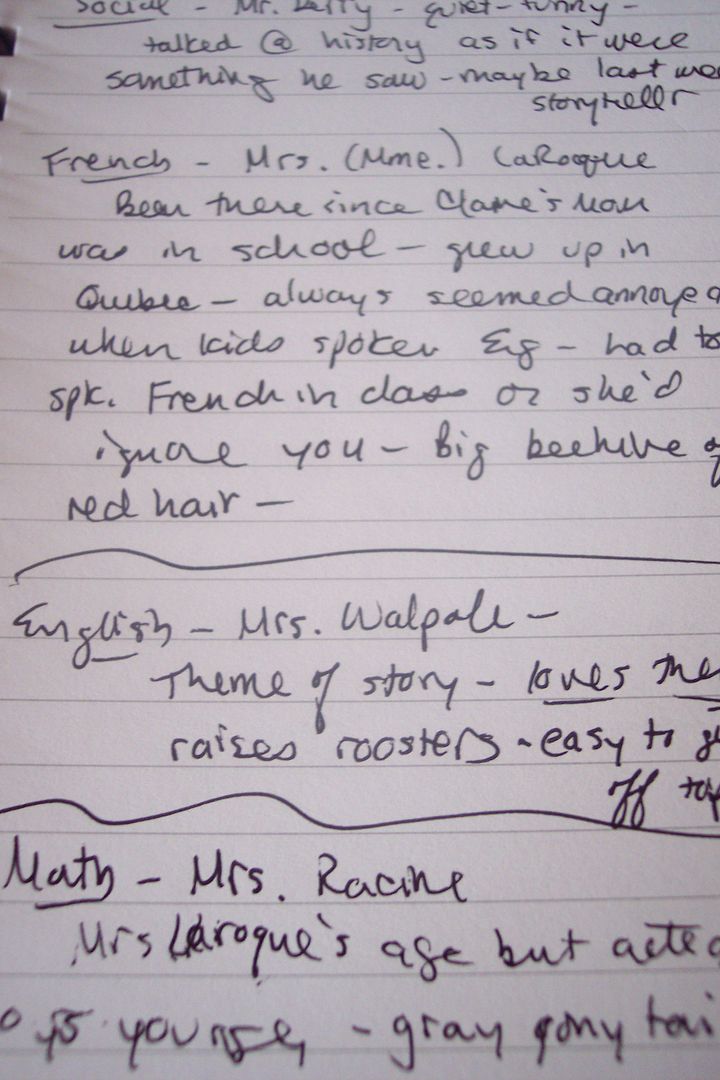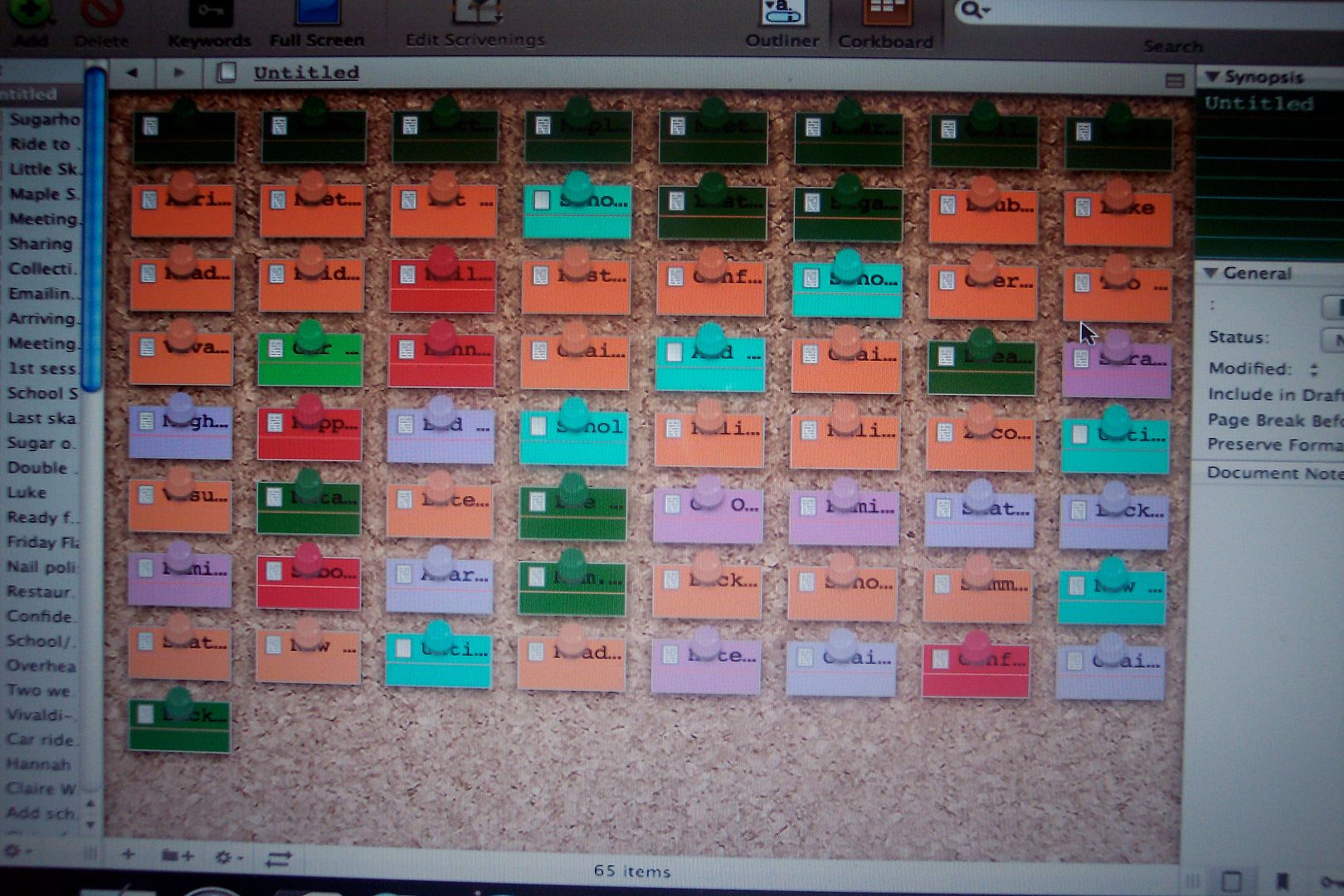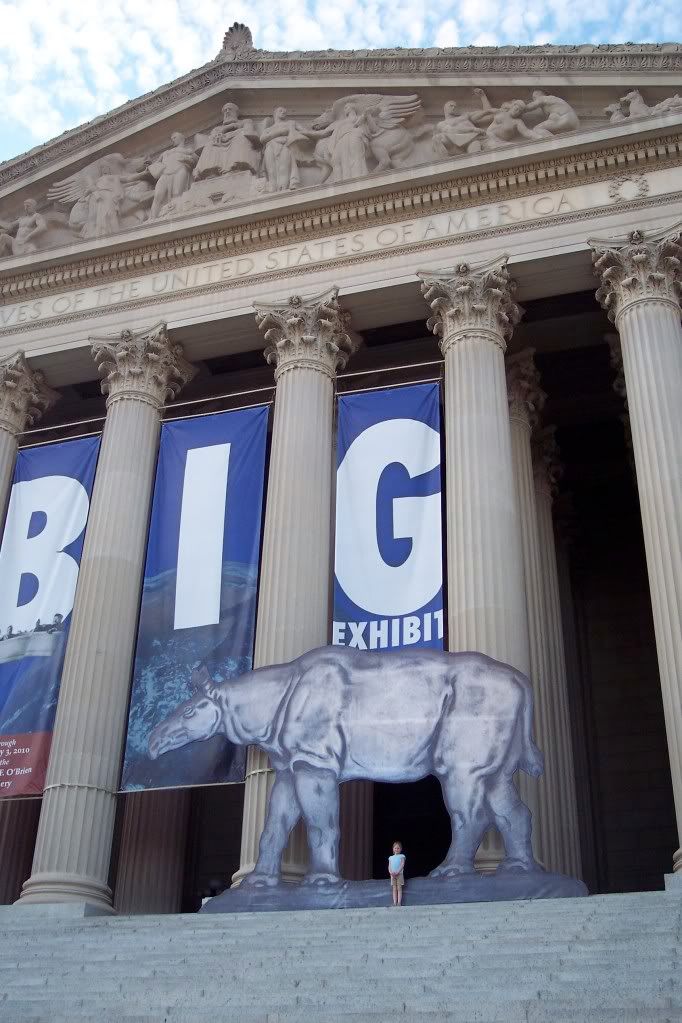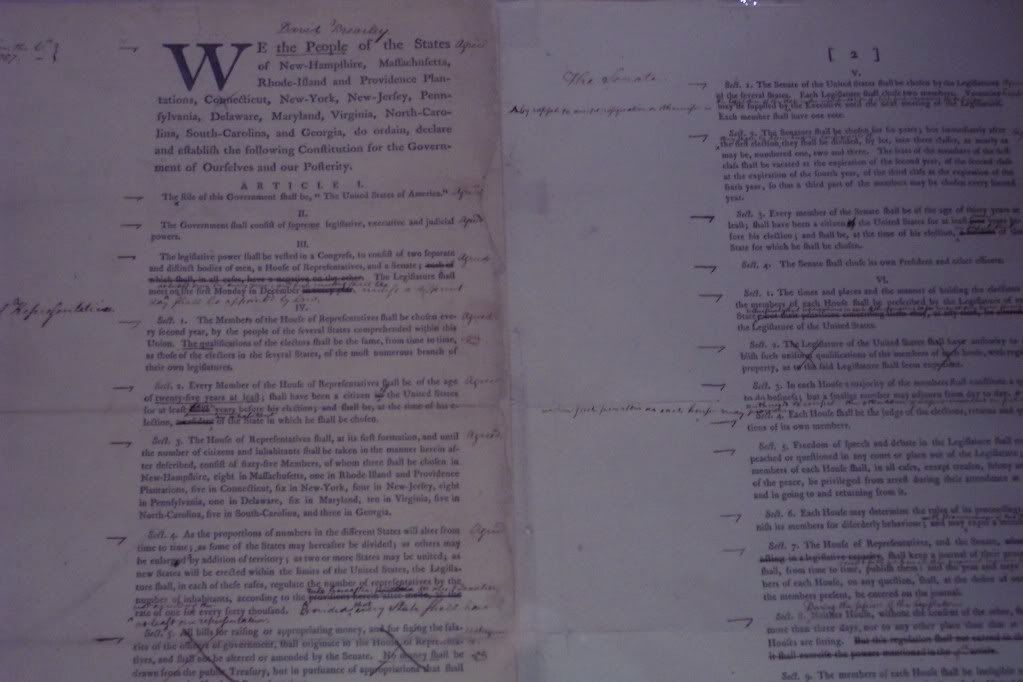I’ll tell you right up front…this is going to be one of those long rambling posts about the writing process, photos included. If you don’t want to be mired in a tour of my messy revision-mind, you should probably just move on now. Nothing to see here…
Still hanging around? Okay… here’s the revision story. Last Friday, the UPS guy came with one of those big, thick, daunting envelopes. My editor at Walker had already emailed to let me know the second round of revisions for my December 2010 middle grade novel SUGAR ON SNOW were on the way. I love revision, but opening that envelope this time threw me for a bit of a loop at first. This revision feels bigger than the first one, and I have less than a month to turn it around if we’re to make copy edits on time. But the more I read over the letter and thought about it, the more excited I got. What editor MK is suggesting is exactly what this book needs to get to the next level…to get ME to where I want to be as a writer.
The revisions fall into two main categories — making relationships between characters deeper and stronger (and there are a lot of characters in this book!) and establishing a better balance between the main character’s home/school life and her ice skating world. Here’s what my revision process has been looking like so far.

There’s the usual green tea, notebook, laptop, manuscript, & revision letter. That paper up on the envelope is actual a plot diagram that editor MK created showing the book’s main plot points leading up to the climax. I’m not showing a closeup because it’s kind of spoilery, but I’ll tell you what it looks like. So I could better understand the balance issue, MK put the plot points that relate to ice skating under the timeline and the home/school stuff over the line. It’s about an 80/20 division right now, heavy on the skating, and I agree with her that it would be stronger if it were more like 60/40.

This second editorial letter is four pages long, almost all focusing on individual character development and relationships. Good stuff.

I’m doing most of that work off the computer…right here.


This is one of those pricey notebooks with a thick cover that I bought for 80% off at a little paper goods store in SoHo on one of my authory trips to NY. I saved it for a time when I needed a special notebook that made me extra excited to write, and when I first felt overwhelmed reading that editorial letter, I knew that it was time to pull it out. I’ve been doing everything I can to develop the main character, Claire, more as a student and friend. I just finished character sketches of every one of her 7th and 8th grade teachers. I’m not sure yet which of those will make it into the new draft, but I know them now.
When I went back to the actual novel to start working on the computer again, the first thing I did was bring it scene by scene into Scrivener, the new writing software I started using after I finished this book.

See the colored index cards on my virtual bulletin board? The green ones represent scenes that focus on Claire’s family & home life. The orange ones represent skating scenes in Lake Placid and the lavender ones are competition scenes. (The red ones are important but are sort of a secret – sorry.) And the turquoise ones are school scenes. But here’s the thing… When I first set this up, there were only two turquoise cards. The others are blank scenes that I’ve added over the past few days – placeholders for the new school scenes that I’m going to write to help with the balance issue. I love that Scrivener lets you “see” the whole manuscript in such a conceptual way – it really helps me at times like this.
Interestingly enough, it was in thinking through one of those new school scenes that I came up with a way to build on one aspect of my main character that I’d sort of alluded to but didn’t really develop fully in the earlier drafts. It’s going to be really, really fun, so I’m saving the work on that thread for after I’ve tackled some of the new scenes that are going to be a little tougher to muddle through. I’ll do that sometimes – use the fun stuff as a reward for sticking it out through the hard stuff.
I don’t save the easy stuff, though, interestingly enough. The little line edits and quick fixes? I do those first for a couple reasons. If I wait too long and have made major changes, it’s harder to find those line edits to make the changes. And also, accomplishing some small jobs helps me to ease back into a manuscript and feel competent in that world again, so that when I tackle the bigger issues, I’m able to do so with more confidence.
You may not hear a whole lot from me, blog-wise, until this revision is done, so I’ll leave you to continue the conversation. What works for you when you’re tackling a big revision? How do you break up the job so it doesn’t feel overwhelming? Any unusual strategies that have led to breakthroughs? Go ahead….talk amongst yourselves… I’ll try to stop by with some tea later on.





